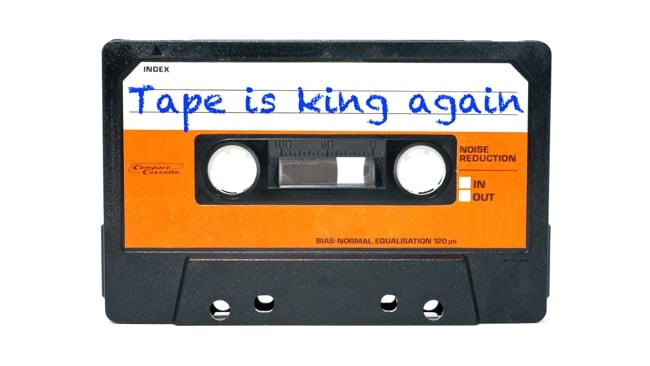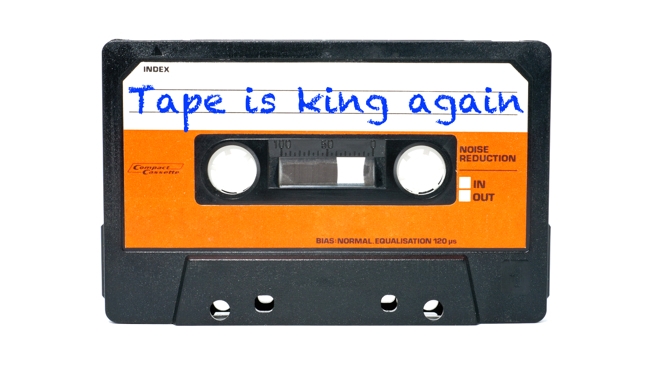
 Tape is king again
Tape is king again
If that sounds like a lot of data, it is, but it's quite possible we'll be making that much with future video formats. This breakthrough from Sony looks like it might solve our storage problems and revive tape at the same time!
A recent announcement by Sony (but also involving IBM) ties in nicely with the discussion we've had over the last few months about tape archiving, primarily regarding the LTO program, and ever-increasing precision in digital imaging which will, naturally, make ever-greater demands on storage infrastructure. This most recent improvement, like a few before it, involves a more advanced technique for coating tape in magnetic media. We've seen this sort of thing before, with perpendicular recording of magnetic zones on hard disks responsible for the terabyte-level drives we currently enjoy, but perhaps most interestingly, the Sony press release talks about tape.
Techniques for depositing magnetic materials onto tape have advanced significantly from the rust-coated-sellotape stage, with approaches using evaporated metal – deposited in a vacuum – now common, although in the past metal particle tape has been seen as more reliable. DVCPRO tape, for instance, was always particle, and ran faster to offset the lower maximum density compared to evaporated DVCAM tape. In either case, the maximum density of recorded information is greatly influenced by the size of the magnetic zones. Sony's new technology allows for zones down to 7.7 nanometres in size, compared to many tens of nanometres in current practice, and includes interesting electron microscope images to demonstrate.
Sputter!
The actual process involved is sputter deposition, which is coincidentally the same bit of physics that causes well-used fluorescent tubes to go black at the ends. Simply and slightly incompletely, the idea is that charged particles impact a surface (such as the heater of a fluorescent tube, or a metal target) with sufficient energy that material is, very gradually and slowly, ejected from impact sites. Often, it is deposited onto nearby objects; the blackness on a fluorescent tube is sputtered heater material, and erosion of the heaters by sputtering is the principal time-mediated failure mode of fluorescent lamps. To delve just one level deeper, Sony are apparently using argon ions – that is, atoms of argon gas with an electrical charge – as the charged particle, and firing it using electrostatic acceleration at a target made of a material, or perhaps part of the material, that they'd like to deposit on the tape substrate in extremely small particles. Sputtering is far from a new process but this particular use of it appears to represent a genuinely useful advancement.
It isn't yet clear what plans are in motion for the technology, or how close it is to leaving the lab, but IBM's involvement is somewhat reassuring as they're part of the LTO program. IBM do have a tape product other than LTO that's used in very large corporate installations but Sony are using LTO6 as a comparison and therefore it might seem reasonable to hope, if not assume, that this sort of process might become part of a future LTO revision. The idea – and it does appear to just be an idea at the moment, based on mathematical extrapolation - is that it'll provide 74 times more capacity than LTO6, which is well north of 180TB per tape, and if we all want to be making 6K movies at 120fps in stereo 3D and 16 bit colour, we might need it.
Tags: Technology


Comments